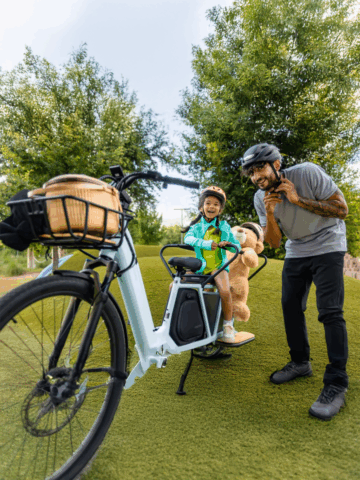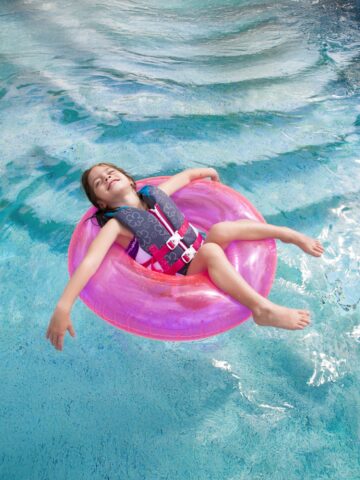The sun is shining, the days are long, and kids have seemingly endless stores of energy.
Summertime at the outdoor playground makes for perfect family memories, but it can also bring up a lot of worries for parents of active, adventurous kids.
Here are some tips from the American Academy of Pediatrics to help keep your children playground-safe all summer, whether at the neighborhood playground, a best friend’s house or a family barbeque at the park.
Look underfoot
A quick inventory of the playground equipment can help tell you whether a playground is kid-safe. Start with what’s under it. A safe playground will have safety-tested mats or loose-fill materials such as shredded rubber mulch, sand, wood chips or bark at least nine inches deep. These materials should extend at least six feet in all directions around the playground equipment—and further around swing sets or slides.
Mind the metal
Keep an eye out for any protruding bolts or open “S” hooks, such as those that fasten to swing set chains or tire swings. These metals can be not only sharp, but also extremely hot on summer days.
Go for soft swings
Swings should be made of soft materials—think rubber, plastic or canvas—rather than rigid materials such as wood.
Test the temp
Take a stroll around the area and test the temperature of all materials before letting your little one dive in. Metals, plastics and even rubber can get extremely hot in direct heat.
Pick sturdy shoes
Make sure your kid wears sturdy shoes and never goes barefoot. It’s easy to miss something sharp or hazardous on the ground, especially if the ground is covered by sand or wood chips.
Look out for swings
Kids can easily get caught up in the fun and run straight into the path of a high-speed swing. Teach kids to always pay attention to what’s around them and allow a wide berth, especially around swings and slides.
Check what your child brought
Children should take off bike helmets, necklaces and anything else looped around the head or neck. Also, be sure they leave behind any leashes, jump ropes, or other long objects that could be a strangulation hazard if caught up in equipment.
Ditch the trampolines
As fun as flying feels, trampolines pose a serious safety threat—and that’s something even supervision and safety netting can’t fix. The safest bet is to avoid home trampolines at all costs, both in your own yard and in the yards your child visits.
If you must bounce…
If the thought of giving up trampolines is too much to bear, follow these trampoline safety musts:
- Supervise: Supervision won’t prevent every trampoline injury, but it can help ensure kids jump as safely as possible.
- One at a time: 75% of trampoline injuries occur when more than one kid is jumping at a time. Allow only one child at a time—no exceptions.
- Check your insurance: Ensure your policy covers trampoline-related claims for yourselves and others. Coverage is highly variable, and a rider may need to be obtained.
Get more expert health advice delivered to your inbox monthly by subscribing to the KidsHealth newsletter here.
Get more safety and injury prevention tips from CHOC experts
More children are affected by injuries than all other childhood illnesses and diseases combined. Most of these injuries are predictable and preventable. Here’s how to keep your child safe.





